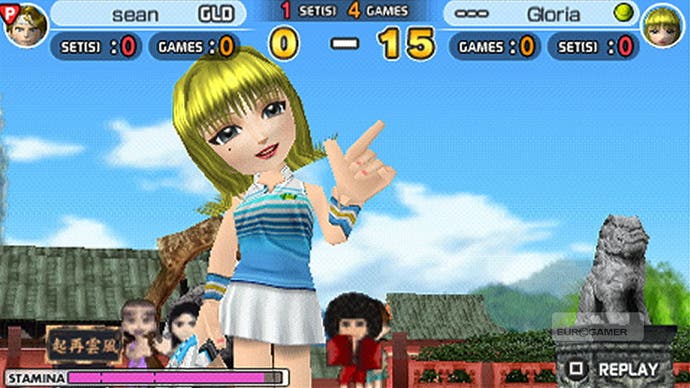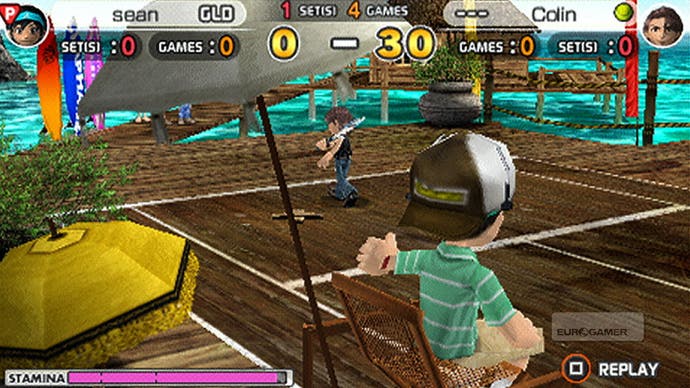Everybody's Tennis
Love all.
The RPG-ification of mainstream videogame genres has been the defining design trend of the past three years, with experience points and levelling a key feature of everything from Modern Warfare to Borderlands. Everybody's Tennis is no different, doling out experience points on a per shot basis, rewarding you in endorphin micropayments for every ace served and on-the-baseline lob successfully landed.
As you level your character, so you unlock new items of clothing in the shop which boost your attributes in subtle ways: for example, giving your budding young tennis star a buff to his backhand while cross-dressing in a Japanese schoolgirl's uniform.
Not only that, but the developer subscribes fully to the RPG's wider tropes as you roam the grounds of tennis clubs or the hallways of a high school solving simple puzzles and challenging opponents to throw-downs on the court. The snappy dialogue and bold characters supply what is one of the most entertaining, if unlikely, stories to be found in a sports game, adding both sharp flavour and context to each match.

Of course, we've seen some of this assured, cartoonish approach to sports before in the developer's other output. Cousin Everybody's Golf has been a consistently solid, enjoyable feature on Sony gaming hardware for well over a decade. The Nintendo-esque, breezy presentation has always been backed up by solid, irresistible systems that often communicate the spirit of the sport far more effectively than those games that stick to a drier, realistic approach.
Pleasingly, that's true here too; the tennis game at the core of the experience is effortlessly robust. More twitchy and fast-paced than Virtua Tennis, it has the feel of Namco's PlayStation-era Smash Court Tennis, quick in the hands but with all the precision required to execute a cross-court volley to the baseline.
Strokes, lobs and slices are each assigned a different button (which appears as a ghostly icon behind the travelling ball to indicate which of the three you and your opponent has used for any shot). Where Virtua Tennis encourages players to move into position and hit the button early, powering up a shot for maximum power, here the emphasis is on swinging at the last possible moment, testing reactions as much as strategy at any single point. Positioning is still important, however, as if you hit the ball while running the accuracy of your placement is diminished.

Featuring an unapologetically Japanese styling, matches are introduced by Fight Night style motion graphics while onomatopoeic speech bubbles fly up every time the ball hits an umpire or ricochets off a wire fence. The sheer amount of on-screen icons and meters flying about during a match is initially dizzying. Smiley icons indicate a well-timed shot while splashes of colour momentarily pop up on the court to indicate where the ball is going to land. These features can be turned off but even with the most minimal HUD on offer, this is still a busy game to look at.




